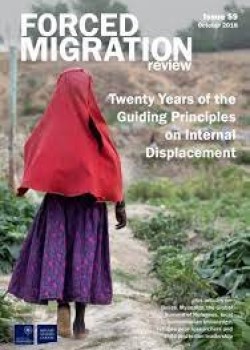.jpg&w=250&h=350)
Economic Review
Jalaya Saha Sangvardanaya - ( Water & Development )
Publisher: People,s Bank
Place of Publish: Sri Lanka, Colombo
Year: 2009
Page Numbers: 48
Series: Volume 35/ Number 3-4/ June/July 2009
Acc. No: 177-J
Category: Journals
Languages: Sinhala
Despite the fact that the access to water in urban areas is as high as 95.4%, it makes disparities in terms of quality and equal access to services that exist among urban populations. For the urban poor, water services are provided mainly through public facilities such as stand posts, common toilets and bathing areas. This provides them with a lower quality service which can limit their quality of life. Fernando and Sanjeewani propose the theoretical approaches for water pricing and state that developing a pro poor water delivery strategy, including a suitable water pricing structure for urban poor, needs to consider what factors determine per capita water use and affordability. The importance of capturing willingness to pay for individual water connections is also emphasized. Fernando and Sanjeewani conclude this article with recommendations for developing pro poor strategies. The need for pro poor strategies to cater to both the affordability and the demand for better water services among the poor is explicitly stated. In order to bridge this gap, concessions and subsidies, support services and implementation strategies must be able to reach out to households at different income brackets and therefore affordability of individual connections. This would increase accessibility to better water services.



